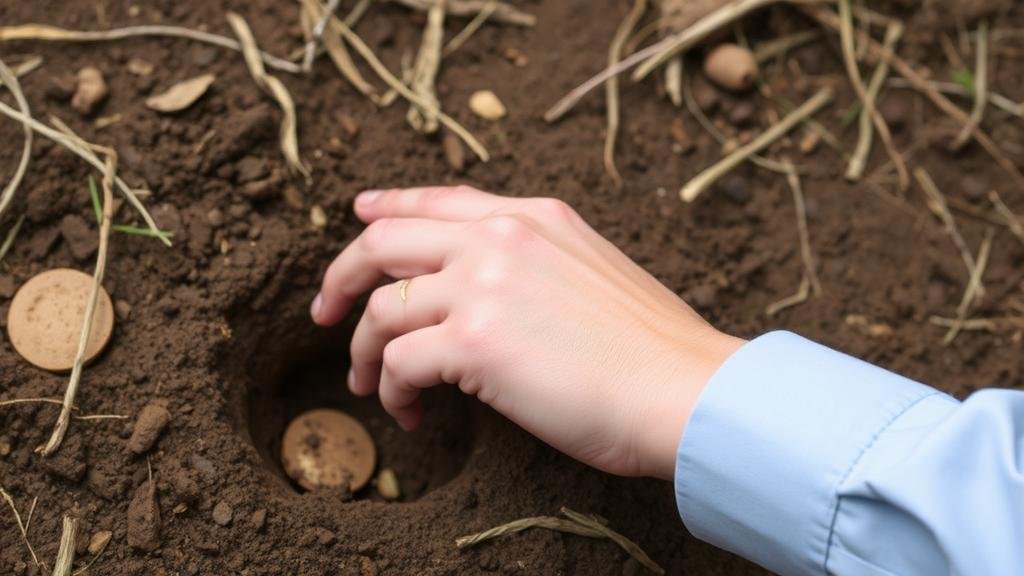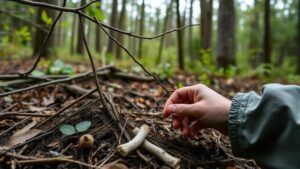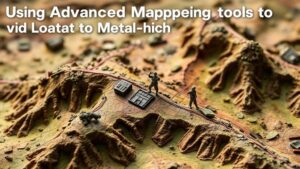How to Identify Artifact Hotspots by Analyzing Wildlife Digging Behavior
How to Identify Artifact Hotspots by Analyzing Wildlife Digging Behavior
The identification of artifact hotspots is a crucial aspect of archaeological research, particularly in terms of increasing the efficiency of excavations and understanding the behavior of past human societies. One innovative approach involves analyzing wildlife digging behavior, which can reveal areas where human activity or habitation may have coincided with natural behaviors of various species in an ecosystem. This article explores how to leverage wildlife digging behavior as a viable method for identifying potential artifact hotspots, grounding the discussion in both theory and practical application.
Understanding Wildlife Digging Behavior
Wildlife digging behavior, particularly among species such as rodents, pigs, and certain bird species, can disturb the soil in ways that uncover or concentrate artifacts. e animals often dig for food, nesting sites, or to create burrows, inadvertently leading to the exposure of human-made items that may lie beneath the surface.
The study of wildlife digging can be likened to using a geological drill to uncover layers of earth. Just as a drill can reveal underlying structures, wildlife digging exposes artifacts by displacing soil, thereby providing clues about the distribution of human activity in a given area.
Case Studies in Digging Behavior
Several studies have demonstrated the effectiveness of analyzing wildlife digging behavior to identify artifact hotspots. For example, a study conducted in the Midwest U.S. examined the burrowing patterns of eastern moles, which influence soil disturbance. In this research, archaeologists noted that high densities of mole activity were correlated with increased artifact recovery rates in nearby areas.
Similarly, a study on feral pig populations in the southern United States revealed that their rooting behavior for food sources often led to the exposure of artifacts buried in the soil. Not only did this behavior uncover valuable historical items, but it also provided insights into pre-Columbian land use and habitation patterns.
Research Methodology
To effectively analyze wildlife digging behavior for the purpose of identifying artifact hotspots, researchers can follow a structured methodology involving several key steps:
- Field Observation: Initial surveys should include the observation of wildlife species known for their digging habits, noting particularly active areas.
- Soil Sampling: Collect soil samples from identified hotspots to assess disturbance levels and identify any exposed artifacts.
- Data Analysis: Use statistical analysis to correlate levels of digging activity with the density and types of artifacts found.
- Collaboration with Ecologists: Engage with wildlife ecologists to understand the behavior patterns of local species, ensuring a comprehensive analysis.
Tools and Technology
Modern technology has enhanced the ability to quantify wildlife digging behavior effectively. For example, remote sensing technology, including infrared cameras and motion detection traps, can be employed to document animal activity in specific areas. Geographic Information Systems (GIS) can also be utilized to map both the locations of wildlife activity and the density of artifacts, enabling archaeologists to visualize hotspots spatially.
In a practical application, researchers can use GIS mapping to overlay wildlife digging patterns with historical wind and water drainage patterns. Such analyses can reveal not only where diggings occur but also why they are prevalent in those areas, providing a more nuanced interpretation of site significance.
Potentials and Limitations
While the approach of analyzing wildlife digging behavior offers significant potential for identifying artifact hotspots, it is essential to consider both its advantages and limitations. On the one hand, this method can result in lower excavation costs and a higher likelihood of discovering previously unknown sites. Also, understanding the interaction between wildlife and human artifacts can deepen insights into ancient ecological systems.
On the other hand, one must account for external factors such as soil composition, human activities, and climatic variables, which may also affect digging patterns. Also, the reliance on specific wildlife behaviors may limit the scope of research in areas where such species are absent.
Actionable Takeaways
For archaeological practitioners seeking to apply this innovative methodology, consider the following actionable steps:
- Conduct preliminary surveys to identify digging patterns of local wildlife.
- Incorporate wildlife behavior analysis into standard archaeological methodologies.
- Use technology like GIS and remote sensing to facilitate data collection and analysis.
- Collaborate with ecologists and environmental scientists to enhance the understanding of species interactions with archaeological landscapes.
To wrap up, analyzing wildlife digging behavior presents a unique and scientifically grounded avenue for identifying artifact hotspots. By combining traditional archaeological methods with insights gained from wildlife behavior studies, archaeologists can create more effective excavation strategies, enhance their understanding of past human-environment interactions, and contribute significantly to the broader field of historical research.



